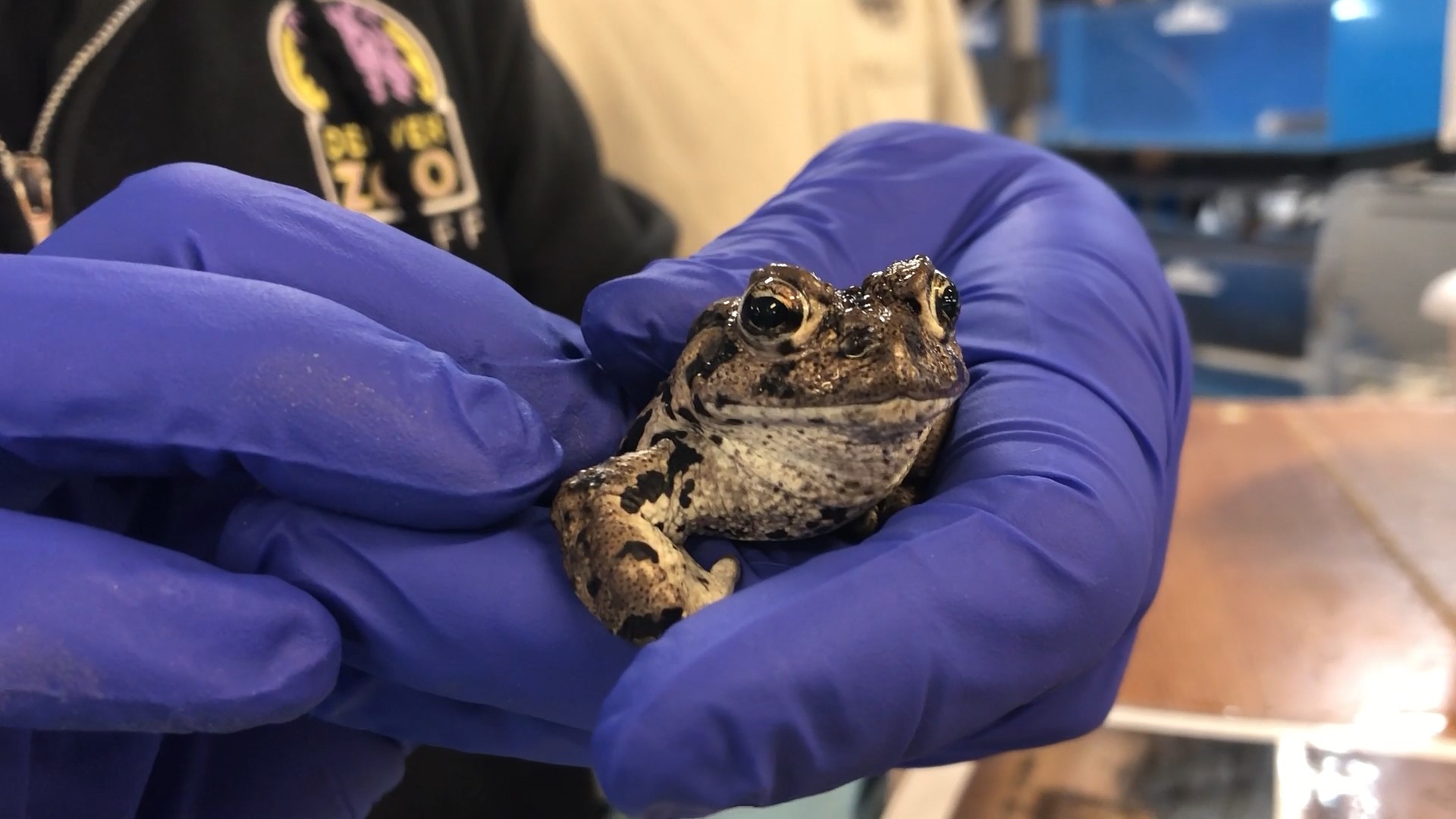DENVER — A team of conservation and amphibian experts is working to boost the state's boreal toad population.
The toad is listed as an endangered species in Colorado and New Mexico due to a dramatic decline in population over the last two decades, according to Colorado Parks and Wildlife (CPW). Now, the Denver Zoo and CPW say they hope to release up to 20,000 tadpoles next summer to help bolster their numbers.
Last month, a team from the zoo traveled to the Native Aquatic Species Restoration Facility (NASRF) in Alamosa to pick up 95 boreal toads and bring them back to Denver.
The NASRF, which is operated by CPW, is dedicated to protecting and restoring threatened and endangered aquatics species native to Colorado.
They were put into brumation, a natural state of inactivity during winter months, before the zoo hopes to breed them this spring. CPW said they will then raise the tadpoles until they can be released in the summer.
Once released, the zoo said they will be looking for volunteers to help monitor the survival of the toadlets.


CPW said they think it will take years before the boreal toad population is back at a stable level, so they expect the project to continue for several years.
“We have had success in the past producing boreal toad eggs and tadpoles at NASRF, but it is challenging, and with the increasing need for more animals, we need to step up breeding and reintroduction efforts,” Harry Crockett, native species aquatic species coordinator for CPW, said in a release.
RELATED: Global warming could mean the end of the pika in Colorado. This group is trying to change that.
Boreal toads used to be common in the southern Rocky Mountains in areas between 7,000 and 12,000 feet in elevation, according to CPW. They said their decline is likely due to both habitat loss and the chytrid fungus, which affects many amphibians.


The Denver Zoo has been active in amphibian conservation for more than 15 years, according to the release. Since its inception in 2000, the NASRF has protected 16 different fish species and has stocked more than 2.1 million fish in rivers, streams and lakes across the state.
SUGGESTED VIDEOS: Animals and Wildlife

